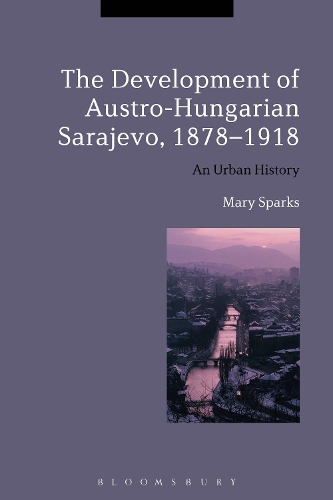
The Development of Austro-Hungarian Sarajevo, 1878-1918: An Urban History
(Paperback)
Available Formats
Publishing Details
The Development of Austro-Hungarian Sarajevo, 1878-1918: An Urban History
By (Author) Mary Sparks
Bloomsbury Publishing PLC
Bloomsbury Academic
24th March 2016
United Kingdom
Classifications
Tertiary Education
Non Fiction
949.742
Physical Properties
Paperback
272
Width 156mm, Height 234mm
381g
Description
The Development of Austro-Hungarian Sarajevo, 1878-1918 charts the urban history of Sarajevo in this period within the context of other modernising central-European cities. It gives detailed consideration to elements of change and continuity in the development of the urban fabric, as well as the economic, social and cultural life of the city. The book also explores how far changes were the work of the occupying Austro-Hungarian administration and the influx of immigrants from elsewhere, and suggests that the local elites from all confessions took an active role in the redevelopment of their city, building an integrated Sarajevan version of urban modernity at a middle-class level. Case studies of particular buildings and their owners, and maps illustrating the chronological development of the city during the period, are used throughout the book to highlight aspects of the aforementioned themes. The built environment forms a major source of evidence, together with material from a range of other sources, including census records, directories, newspapers, government documents, planning records and postcards. These sources are also used to augment observations and arguments put forward in this important study for all students and scholars of modern Central and Eastern Europe.
Reviews
Mary Sparks fascinating study plots this multifaceted westward development, the legacy of four decades of Austro-Hungarian administration that transformed the Bosnian capital ... This inspiring study serves as both a work of industrious scholarship which will appeal to researchers from many disciplines and as a splendid guide to a substantial portion of the modern centre. -- Richard Mills, University of East Anglia, UK * European History Quarterly *
Basing her work on a sophisticated use of diverse archives and a variety of published sources, Sparks presents a convincing narrative of a small, provincial, Ottoman city being transformed by outside forces (the Austrian authorities) and made into the center of a modernizing Bosnian economy Well-chosen illustrations, maps, and tables enhance the text. Summing Up: Recommended. Upper-division undergraduates and above. -- T. R. Weeks, Southern Illinois University * CHOICE *
Author Bio
Mary Sparks is an independent scholar with a PhD in history from the Open University, UK.
